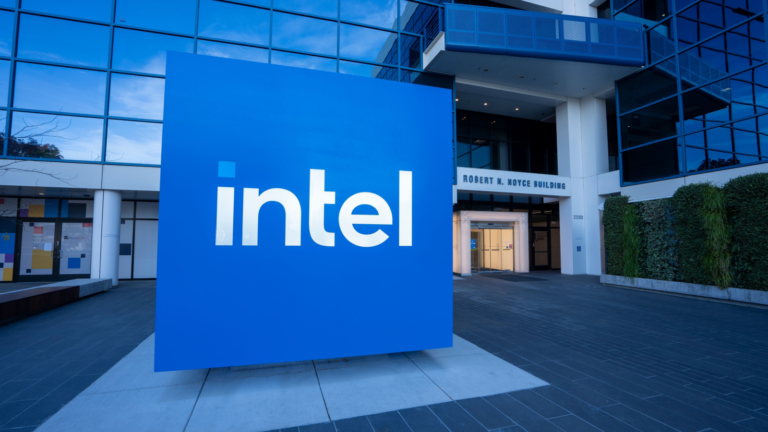These companies are poised to deliver strong growth, margin expansion, and cash flow upside in the next five years
There is no doubt that blue-chip stocks are steady value creators and act as a fortress for the portfolio. However, it’s growth and high-potential penny stocks that can make millionaires.
A general tendency is to look at penny stocks purely as a speculative bet. That’s understandable in specific cases where the rally is driven by factors like short-squeeze. However, a deeper look into the world of penny stocks will reveal names that are fundamentally strong.
Further, selected penny stocks represent business that have immense growth potential in the long term. Of course, there’s many a slip between the cup and the lip. Exposure to quality penny stocks should be limited to 15% of the portfolio considering the high-beta factor.
Having said that, when the target is 10x returns, even 15% allocation is likely to have a significant impact on total portfolio returns. Let’s therefore talk about seven high-potential penny stocks to buy for multibagger returns by 2029.
Cronos (CRON)
Cronos (NASDAQ:CRON) is a high-potential penny stock that can deliver 10x or 20x returns by 2029. The cannabis sector has ample headroom for growth and regulatory headwinds has been waning.
It’s worth noting that CRON stock has trended higher by almost 35% in the last six months. The rally has been backed by positive business developments. Further, the news of Germany legalizing cannabis has been a catalyst for the rally. Additionally, there is a strong case for reclassification of cannabis as a Schedule III drug in the United States. If this happens in the coming quarters, CRON stock is likely to go ballistic.
From a financial perspective, Cronos reported a strong cash buffer of $862 million as of 2023. This provides flexibility for aggressive growth investments. Cronos has also been pursuing geographic expansion. The Company has presence in Canada and Israel. In the recent past, Cronos has ventured into Australia and Germany in the medicinal cannabis market. As the addressable market expands, growth is likely to accelerate.
Solid Power (SLDP)
In the solid-state batter space, Solid Power (NASDAQ:SLDP) is an attractive pick. If the Company can commercialize solid-state batteries in the next few years, multibagger returns are on the cards. After a deep correction, SLDP stock seems to have bottomed out and has trended higher by 22% for year-to-date. I expect the uptrend to sustain backed by positive business progress.
The first positive is that Solid Power has the backing of automotive majors that include Ford (NYSE:F) and BMW (OTCMKTS:BMWYY). In December 2022, the Company licensed its cell design and technology to BMW for parallel research and development. Additionally, Solid Power has continued to deepen its partnership with SK On. This will enable the Company to make inroads in the Korean market.
From a business development perspective, Solid Power shipped A-1 cells to automotive partners in October 2023 for validation testing. This year, the Company has shifted focus to A-2 sample cells. With a strong cash buffer, I don’t see any financial concerns. Once automotive validation delivers positive outcome, SLDP stock is likely to surge.
Blink Charging (BLNK)
Without a proper EV charging infrastructure, it’s impossible for the industry to achieve the EV adoption target in the coming years. EV charging companies are therefore likely to benefit in the coming decade.
Among emerging players, Blink Charging (NASDAQ:BLNK) looks promising. In the last 12 months, BLNK stock has plunged by 65%. However, the correction is overdone and I expect a strong reversal.
For 2023, Blink reported revenue growth of 130% on a year-on-year basis to $140.6 million. For the current year, revenue is guided at $170 million. Therefore, there is growth deceleration. However, the good news is that expects full year gross margin of 33%. Further, the Company expects to achieve adjusted EBITDA break-even by the end of 2024.
With ample scope for growth in the United States and Europe, I expect renewed acceleration in top-line. Additionally, EBITDA margin expansion is likely to sustain in the coming years on the back of operating leverage and recurring services revenue.
Standard Lithium (SLI)
Lithium stocks have been depressed in the last few quarters and Standard Lithium (NYSE:SLI) is no exception. SLI stock has plunged by 65% in the last 12 months mirroring the deep correction in lithium.
However, purely based on the asset potential, I believe that it’s a good time to buy SLI stock. Once lithium reverses, the stock will surge from a deep valuation gap as indicated by the asset net present value.
Currently, Standard Lithium has a market valuation of $218 million. In comparison, the key asset of the company (South West Arkansas) has an after-tax net present value of $4.5 billion. Further, the Lanxess project has an after-tax NPV of $772 million.
Besides the upside in lithium, financing of construction for the South West Arkansas project is a potential game changer. The asset requires a development capex of $1.27 billion. Once financing is secured, SLI stock will skyrocket.
Aker Carbon Capture (AKCCF)
Aker Carbon Capture (OTCMKTS:AKCCF) has been under-the-radar as the stock trades in the OTC exchange. However, it’s among the high-potential penny stocks that can deliver 10x to 20x returns in the coming years.
As an overview, Aker Carbon is in the business of providing products, technology, and solutions in the field of carbon capture. With global focus on decarbonisation, Aker has positive industry tailwinds beyond the decade. Further, with a proven technology, the Company is well positioned for stellar growth. Aker Carbon has already delivered seven carbon capture units with the technology having 60,000 operating hours.
As of Q4 2023, Aker Carbon reported a strong order backlog of 2.6 billion Norwegian krone. It’s likely that the order backlog will swell significantly in the next few years.
Recently, the Company signed a memorandum of understanding with MAN Energy Solutions in the U.S. The country has a potential market of 200 tons of carbon capture by 2030. Of course, European markets will add to the backlog and Aker is targeting to capture 10 million tonnes CO2 per annum by 2025. This will translate into stellar growth and margin expansion.
Yatra Online (YTRA)
Yatra Online (NASDAQ:YTRA) stock is a micro-cap and hence carries significantly higher risk. However, YTRA stock is deeply undervalued and can surprise in the next few years. As an overview, Yatra is an online travel company in the business of air ticketing, hotels, holiday packages, and other travel related services. The Company’s business focus is in India, which is a market with big potential.
To put things into perspective, Indian travellers are set to be the fourth largest global spenders by 2030. In terms of value, the spending on travel and tourism is predicted at $410 billion by the end of the decade. Clearly, the opportunity is huge and the best part of growth is due for online travel companies.
Specific to Yatra, the corporate travel business is a differentiating factor among online players. Yatra has 800 corporate customers as clients with an addressable employee base of seven million. At the same time, the Company is increasing focus on the business-to-consumer segment. This is likely to ensure sustainable growth and continued margin expansion.
Archer Aviation (ACHR)
The flying car market is at a nascent growth stage. Early movers are likely to create immense value if the business is backed by innovation and a strong management. To put things into perspective, the flying car market is expected to be worth $9 trillion by 2050.
One company that looks promising is Archer Aviation (NYSE:ACHR). ACHR stock has been in a correction mode in the last six months and it’s a good opportunity to accumulate for multibagger returns.
Archer has made significant strides in terms of business progress. It’s likely that the Company’s eVTOL aircraft will be commercialized in the United States in 2025. During the same year, the Company is also targeting operations in Dubai. Further, Archer has plans to commence operations in India in 2026. In the next 24 months, I expect announcements related to entry into multiple other countries through local partnerships.
Another important point to note is that Archer expects to complete the construction of its manufacturing facility in 2024. This will support production of 650 aircraft annually. This positions Archer to service the existing order backlog of $3.5 billion. It’s also likely that the backlog will continue to swell in the coming years.
On the date of publication, Faisal Humayun did not hold (either directly or indirectly) any positions in the securities mentioned in this article. The opinions expressed in this article are those of the writer, subject to the InvestorPlace.com Publishing Guidelines.
Faisal Humayun is a senior research analyst with 12 years of industry experience in the field of credit research, equity research and financial modeling. Faisal has authored over 1,500 stock specific articles with focus on the technology, energy and commodities sector.




















